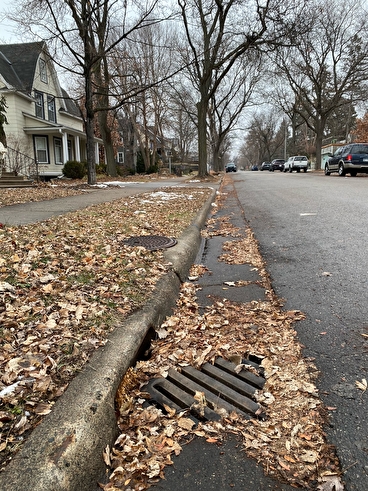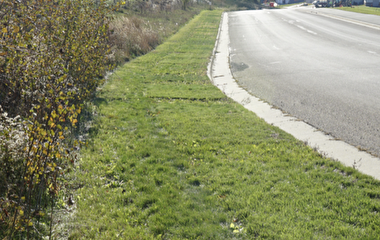
A long-running series of U of M research projects aimed at improving stormwater quality are beginning to see practical application by stormwater specialists from the Twin Cities metro area and beyond.
Professor John Gulliver with the Department of Civil, Environmental, and Geo- Engineering has been studying best practices for stormwater management for about 16 years. Most recently, he has focused specifically on mitigating phosphorous contamination.
“Excess phosphorus results in an algae bloom, low oxygen levels, poor ecological health, public health (issues), and recreation issues,” Gulliver said in a session at the 2023 CTS Transportation Research Conference. As of 2017, 45 percent of lakes in the US are impaired due to elevated phosphorous levels, according to the EPA.
In the past, stormwater ponds were assumed to be an effective way to indefinitely reduce phosphorous contamination to water bodies, Gulliver said. However, his recent research has found that older ponds tend to lose effectiveness as they fill with sediment if they are not maintained.
Ross Bintner, engineering services manager for the City of Edina, said that ideally, he would dredge the sediment from his stormwater ponds after every major rain event. However, city resources are not infinite, and dredging is expensive. “I know every time I turn that crank on my project side,” I’m going to be starting a contract, I’m going to be ripping up the nearby soils, [and] I’m going to incur some costs,” Bintner said.
Ryan Johnson, environmental manager with the City of Roseville, encountered these issues when dredging a local pond. Alameda Pond is located in a particularly low, water-logged area that makes equipment access difficult. Dredging 1,600 cubic yards of sediment from the pond costs around $350,000, he said.
To mitigate the overall need for maintenance, both Johnson and Bintner have been using Gulliver’s research to increase the overall effectiveness and lifespan of these stormwater ponds.
At the outflow point of Alameda Pond, for example, Johnson has installed iron-treated sand filtration systems to pull phosphorous out of the water. Both Edina and Roseville have also implemented street-sweeping programs, which can extend the life of both stormwater ponds and filtration systems by removing the large sticks, leaves, and clots of dirt that would otherwise leach phosphorous. “We’re going to get the most function out of this that we can,” Johnson said.
Gulliver’s research also notes that wind mixing plays a large part in the health of a pond; it promotes dissolved oxygen, which in turn prevents sediment-bound phosphorous from releasing into the water. Clearing nearby obstacles, increasing the surface area of the pond, or using fans to increase wind mixing could potentially decrease the need for dredging, Gulliver said.
“Now we’re seeing how we really need to get a variety of different approaches all up and down the treatment train,” Bintner added.
Gulliver’s research has also proved useful in helping cities prioritize pond maintenance. Noah Czech, stormwater compliance specialist for the City of St. Cloud, has been using Gulliver’s work to develop a “maintenance score” system for St. Cloud’s 151 ponds. Ponds that have a bigger drainage area, for example, warrant higher priority, as do ponds that provide critical ecological or infrastructure protection.
“We have an environmental dollar. Do we spend it on the pond? Do we build something new?” Czech said. “We have to think, as a city—how do we spend that environmental dollar? Where is that research pointing us?”
Ben Janke, working with Gulliver as a research associate with the St. Anthony Falls Laboratory, has also been developing indicators that practitioners like Czech can use to more easily determine when a pond needs maintenance.
Duckweed, for example, is a reliable indicator of high phosphorous concentrations, since phosphorous is a nutrient that causes explosive growth in algae and other aquatic plants.
“Since duckweed is something you can observe just from Google Earth and going out to visit a pond a few times,” Janke said, “it’s actually a really reliable indicator of the health of your pond.”
Janke and his research team are trying to identify other indicators that use readily available data, such as pond age and nearby tree canopy coverage. They’re also in the process of testing and improving a spreadsheet assessment tool they developed to help practitioners calculate the health of a pond.
“The more we learn about the ponds,” Bintner said, “the better we are able to target and make this pond and this whole system work in harmony.”
—Sophie Koch, contributing writer


